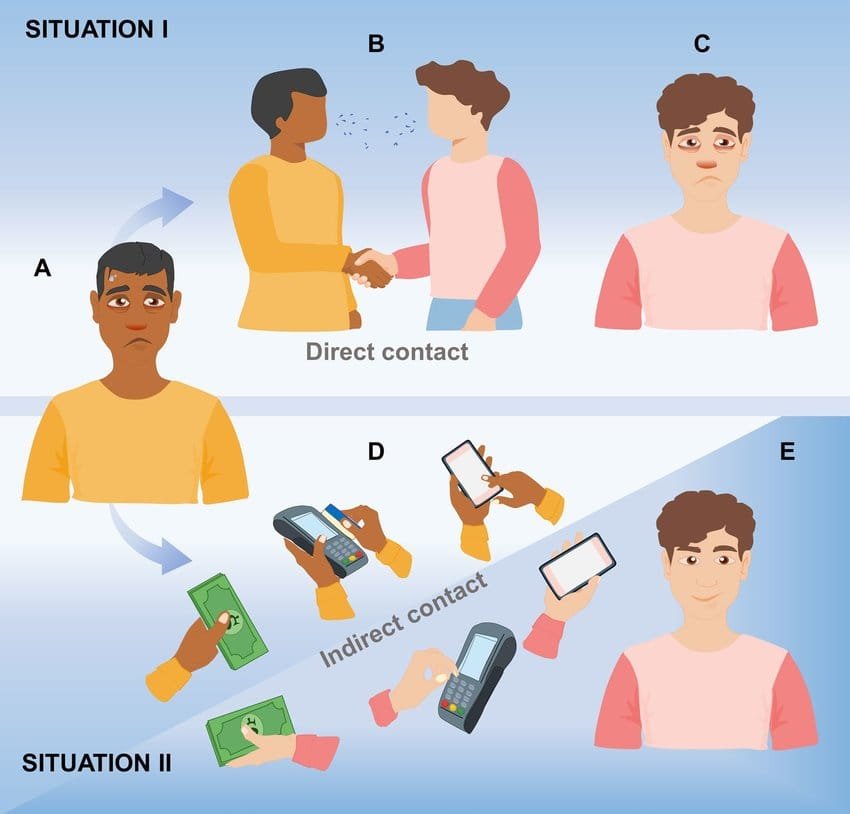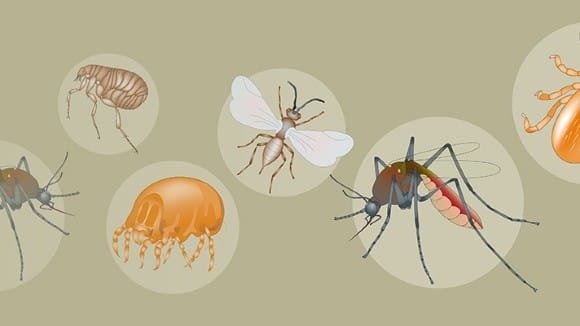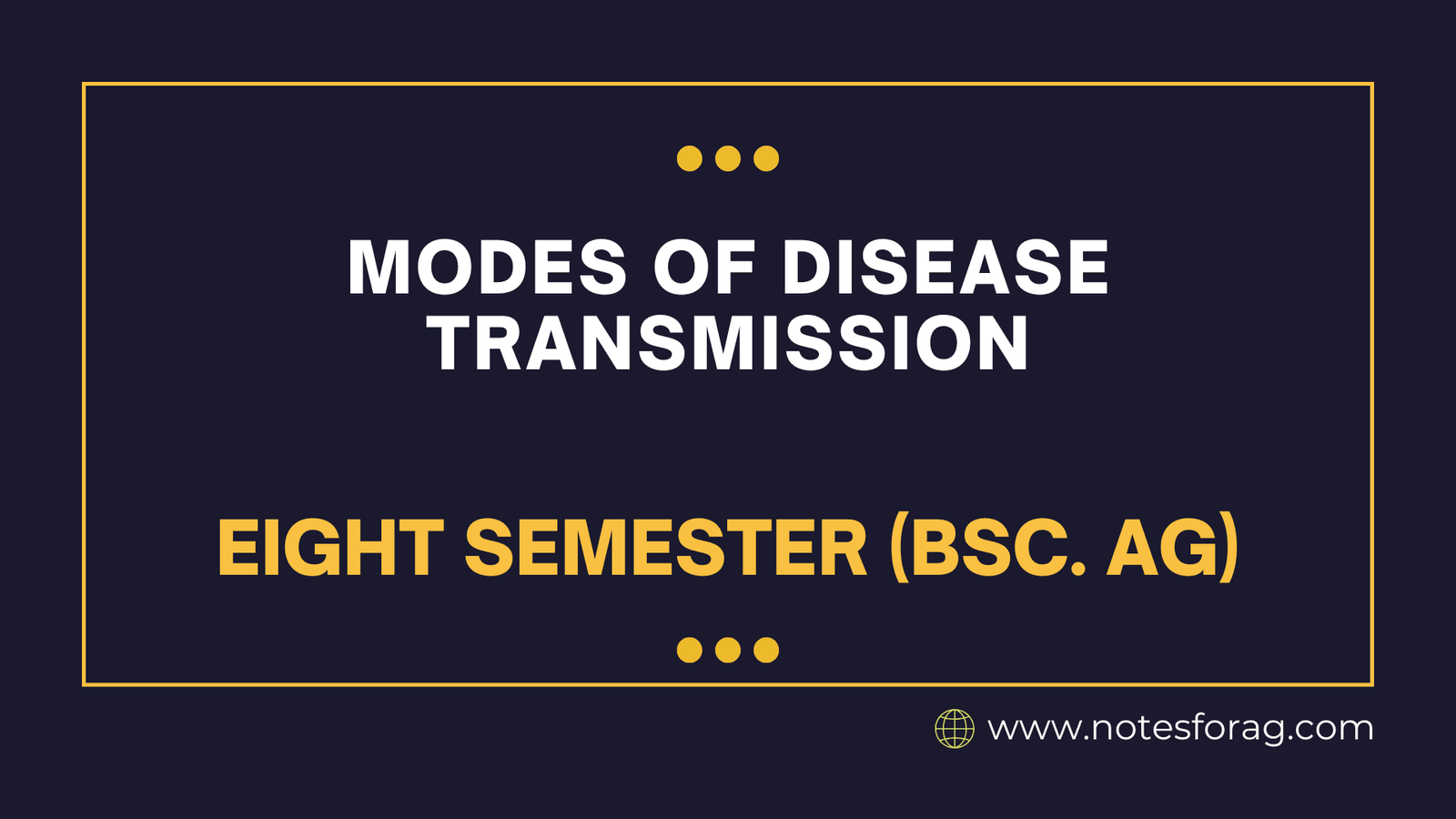Disease transmission
Disease transmission is the process by which illnesses spread from one living being to another. This can happen in different ways, depending on the type of disease and how it moves through the environment. For example, diseases can spread directly through close contact, like touching or sharing bodily fluids, or indirectly through contaminated surfaces, food, or water. Some diseases spread through the air when infected animals or people cough or sneeze, releasing germs into the air that others then breathe in.
Table of Contents
In animals and people, understanding how diseases spread is key to preventing outbreaks and keeping everyone healthy. By learning about different transmission methods—such as contact with infected individuals, exposure to germs in the environment, or through insects carrying bacteria or viruses—people can take steps like cleaning, vaccinating, and managing spaces to limit disease spread.
Animal health is crucial not just for the animals themselves, but also for farmers, pet owners, and people who depend on animals for food and work. Understanding how diseases spread among animals can help us keep them healthy and safe. Here’s a look at the main ways animal diseases are transmitted and simple ways to prevent them.
Modes of Disease Transmission
The modes of disease transmission are
Direct Contact Transmission

Direct contact transmission happens when animals get sick by touching each other, grooming, biting, or mating. Diseases like rabies and foot-and-mouth disease spread quickly through direct contact, as bacteria or viruses in the sick animal’s saliva, blood, or mucus can easily infect others nearby. Animals in herds are especially at risk since they stay close together, making it easier for disease to spread.
To help prevent direct contact transmission, it’s important to keep sick animals separated from healthy ones. Isolating infected animals as soon as symptoms are noticed can stop the disease from reaching others. Regular health check-ups are also useful for catching illness early before it spreads.
Indirect Contact Transmission
In indirect contact transmission, animals pick up diseases from their environment—such as contaminated surfaces, tools, water, or feed. For example, if a sick animal coughs or sneezes near shared water or food, the bacteria or viruses can stick around and infect the next animal that comes into contact. Parvovirus in dogs is one example that spreads through contaminated areas.
Preventing indirect contact transmission involves regular cleaning of areas where animals eat, sleep, or spend time. Tools like feeders, water containers, and grooming tools should be sanitized frequently. Farms should clean barns, pens, and other animal areas regularly to reduce the chances of infection.
Airborne Transmission

Airborne transmission happens when tiny droplets in the air carry diseases from one animal to another, usually through sneezing, coughing, or breathing. In confined spaces, some viruses and bacteria can linger in the air, ready to infect any nearby animals that breathe them in. Diseases like kennel cough in dogs and avian flu in birds spread this way.
To reduce airborne transmission, it’s helpful to keep animal areas well-ventilated with plenty of fresh air. Confined spaces make it easier for airborne germs to spread, so keeping infected animals isolated and avoiding overcrowded pens and barns can help.
Vector-Borne Transmission

Vector-borne transmission occurs when pests or insects like ticks, fleas, or mosquitoes carry diseases from one animal to another. For instance, ticks can spread Lyme disease, while mosquitoes can spread heartworm in dogs.
Preventing vector-borne diseases involves managing the pests that carry these germs. Insect repellents or protective collars can help pets avoid ticks and fleas. On farms, keeping areas clean and managing waste helps keep down the number of flies and mosquitoes. Regularly checking animals for ticks or fleas, especially after outdoor time, is also helpful.
Food and Water-Borne Transmission
Food and water-borne transmission happens when animals eat or drink something contaminated with bacteria, viruses, or parasites. For example, salmonella can spread when animals consume spoiled food or drink dirty water. Poor sanitation can make it easy for food and water to become contaminated, especially in shared areas.
To prevent food and water-borne diseases, it’s essential to provide animals with fresh, clean water and avoid feeding them spoiled food. Feeding areas should be kept clean, and food should be stored properly. On farms, water sources should be checked for contamination, and water troughs should be cleaned regularly.
Vertical Transmission
Vertical transmission is when a mother animal passes a disease directly to her offspring, either during pregnancy or through milk after birth. Brucellosis, for example, can spread this way in cattle, affecting both the mother and her young.
Preventing vertical transmission often requires regular health checks for pregnant animals and vaccinations to lower the risk of passing on diseases. Making sure the mother is healthy before breeding can help protect the young.
Summing It All Up
These modes of disease transmission direct contact, indirect contact, airborne, vector-borne, food and water-brone, and vertical transmission are the primary ways diseases spread among animals.Each type has its Unique challenges and requires specific actions to prevent or control the spread. Knowing these models helps farmers, pet owners, and animal caregivers keep their animals healthier and stop diseases before they spread.
Preventing animal diseases involves good hygiene practices, regular vaccinations, proper sanitation, and frequent check-ups. With the right precautions and quick action when animals show symptoms, we can keep diseases under control, protecting not only animal health but also the people and industries that rely on them.
Frequently Asked Questions (FAQ)
What is disease transmission?
Disease transmission is how an illness spreads from one animal, person, or place to another. It happens in different ways, like through direct contact, airbrone particles, contaminated surfaces, food, water, or insects .
How can I prevent disease transmission in animals?
To prevent disease transmission, you should regularly clean animal areas, provide fresh food and water, vaccinate animals, and isolate sick animals. Good hygiene and proper management of the environment also help reduce the spread of diseases.
Why is understanding disease transmission important?
Understanding how diseases spread helps people take action to prevent outbreaks, protect animals, and avoid contamination that can affect human health. It helps to manage risks in farming, veterinary care, and animal husbandry.
Related Articles

